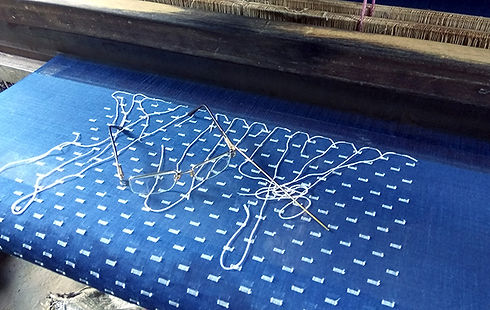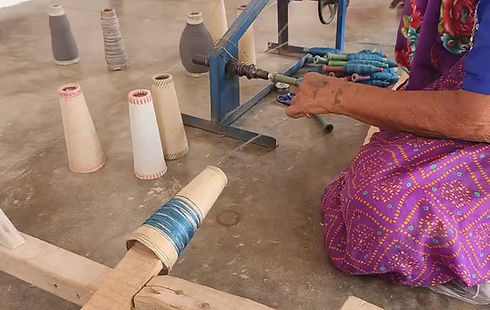Stories Of

Rabari Mirror Work
Rabari embroidery is a vibrant and intricate textile art form created by the Rabari community, known for their nomadic or semi-nomadic lifestyle in the Kutch region of Gujarat, India. It is characterized by the use of bold, colorful stitches, mirrors, and a variety of motifs, including animals, birds, and geometric patterns. Rabari embroidery is not just an art form; it's a way for women to express their creativity, cultural identity, and stories.
Mirror Work: A prominent feature, using small mirrors (aabhlas or tikris) that are intricately attached to the fabric with tiny stitches.
Jamdani
A living heritage of fine muslin weaving, Jamdani is handloom at its most intricate. With each motif painstakingly inserted by hand into the weft, the fabric becomes a canvas of floating patterns — floral vines, paisleys, and geometric arrangements that seem to levitate against sheer cotton.
Time-intensive and meditative, jamdani weaving often takes weeks or even months to complete a single sari. In a world that moves fast, jamdani teaches us the value of stillness and attention.


Khadi
At the heart of our work lies a quiet reverence for khadi — more than a fabric, it is a philosophy. Spun by hand, woven with intention, and rooted in India’s freedom movement, khadi holds within its threads the essence of patience, dignity, and resilience.
Every weave is an act of quiet rebellion against mass production, a celebration of the human hand. Our pieces draw from this ethos, honoring slowness, sustainability, and soul.
Bhujodi
From the arid landscapes of Kutch emerges Bhujodi weaving a tradition passed down through generations of the Vankar community. Here, rhythm lives in the loom, and stories are woven into stripes and borders.
We work closely with artisans who use kala cotton, a purely rain-fed, indigenous crop that grows without pesticides or irrigation. Coarse yet comforting, kala cotton carries the earth in its texture — raw, unpolished, and deeply rooted in its ecosystem
